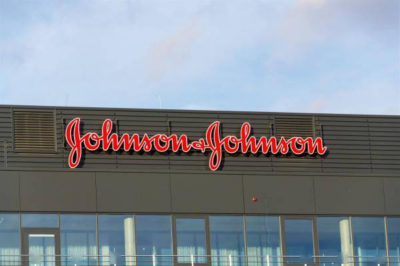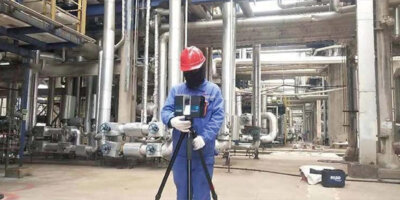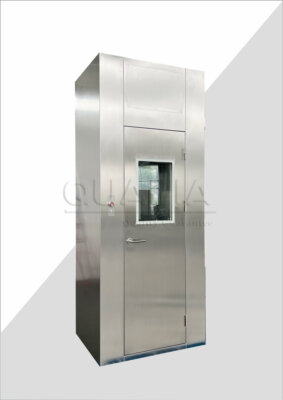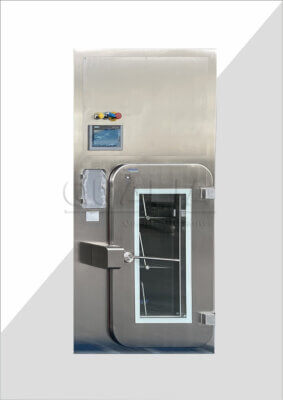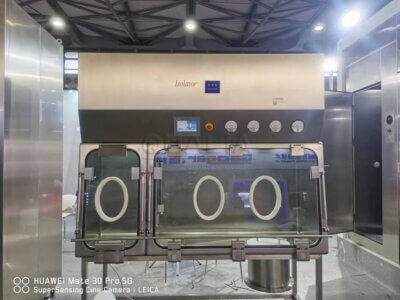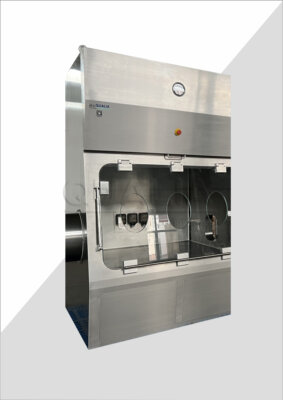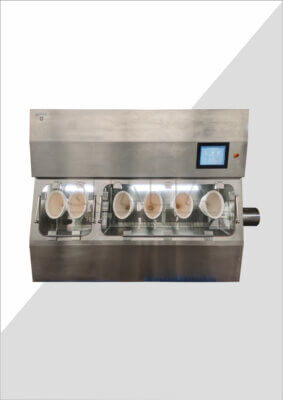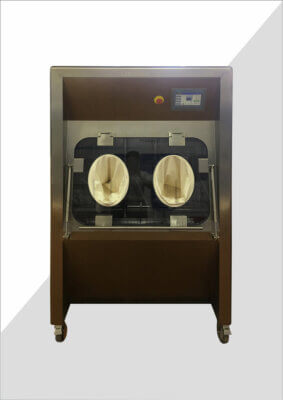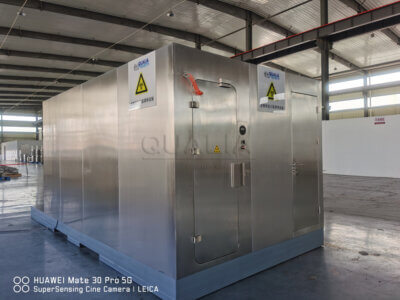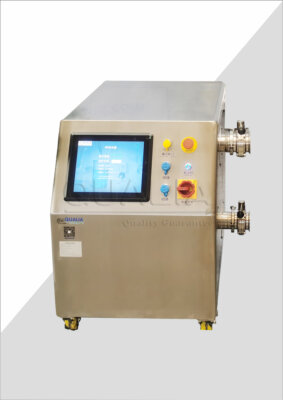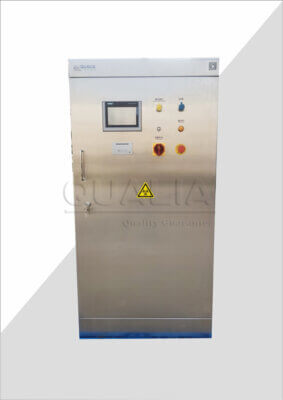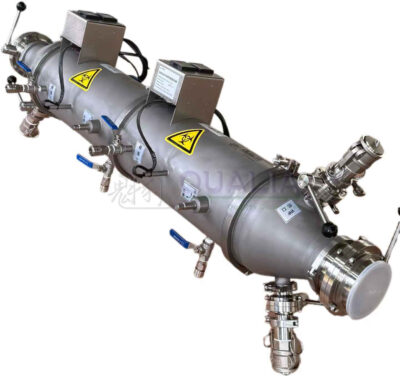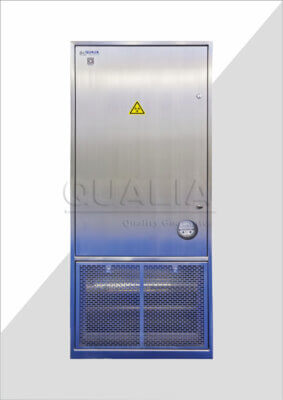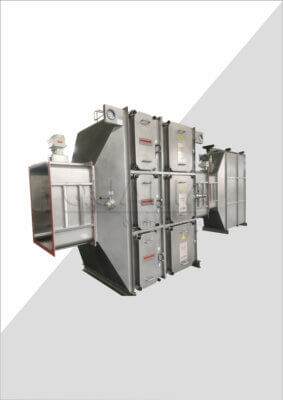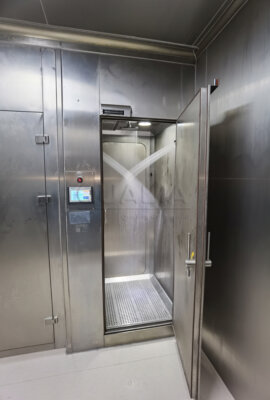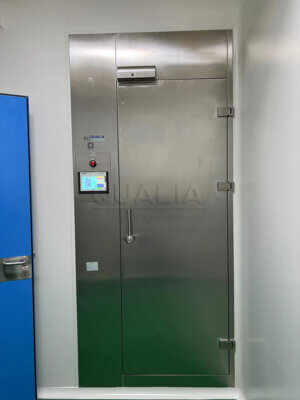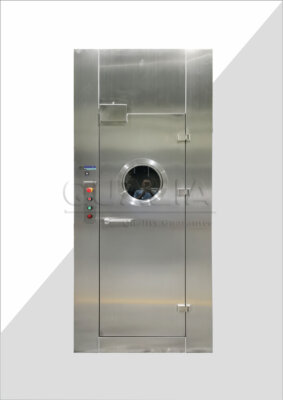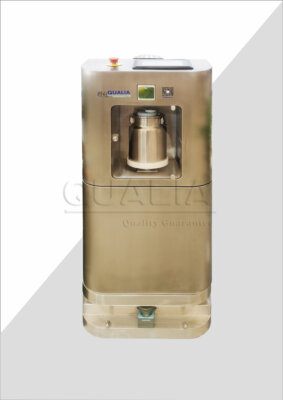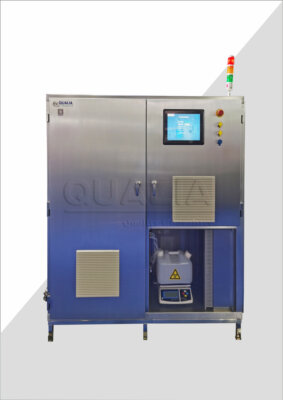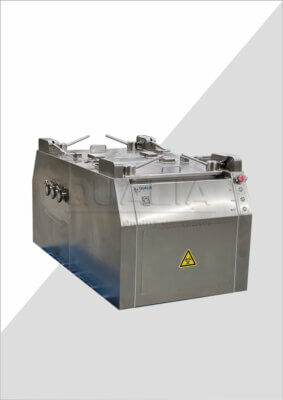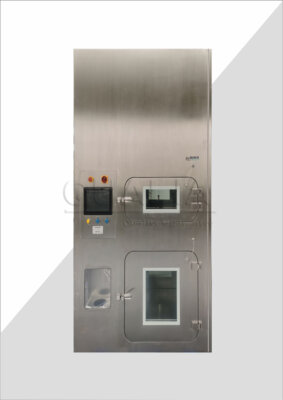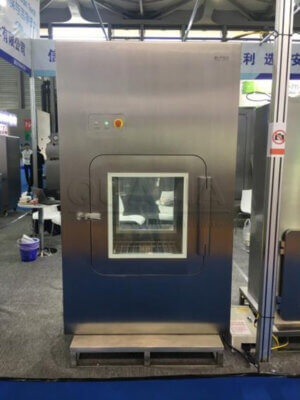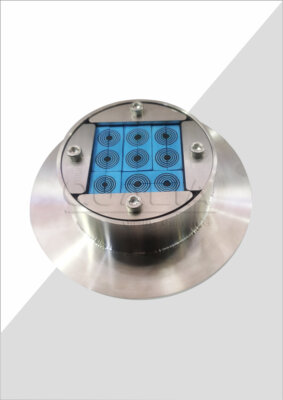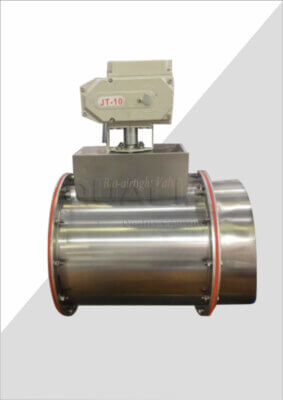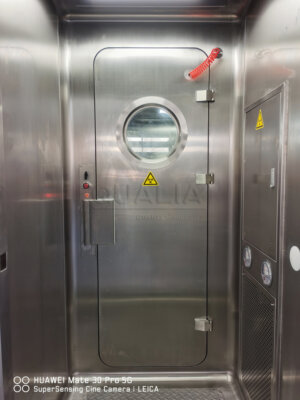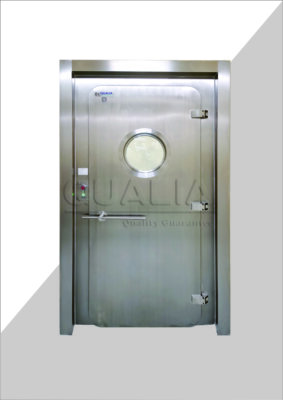Introduction
In today’s highly regulated industrial landscape, APR door compliance represents a critical challenge that can make or break operational continuity. Companies across pharmaceutical, biotechnology, and food processing sectors face increasingly stringent requirements for their containment systems, with mechanical seal performance at the forefront of regulatory scrutiny.
The complexity of maintaining compliance while ensuring operational efficiency creates a persistent headache for facility managers and quality assurance teams. Non-compliance penalties can reach millions of dollars, while production shutdowns due to failed inspections devastate quarterly targets and damage hard-earned reputations.
This comprehensive guide delivers actionable insights into navigating APR regulatory frameworks, implementing robust door seal protocols, and maintaining long-term compliance success. We’ll explore industry-specific requirements, examine proven methodologies, and reveal strategies that leading organizations use to stay ahead of evolving standards. QUALIA Bio-Tech has been at the forefront of developing solutions that address these complex compliance challenges.
What is APR Door Compliance and Why Does It Matter?
APR (Access Port Restriction) door compliance encompasses a comprehensive framework of regulations designed to ensure containment integrity in controlled environments. These standards govern everything from seal performance characteristics to documentation requirements, creating a multi-layered approach to safety and quality assurance.
Understanding APR Regulatory Framework
The regulatory landscape for APR systems involves multiple governing bodies, each with specific focus areas and enforcement mechanisms. FDA regulations under 21 CFR Part 11 establish electronic record requirements, while ISO 14644 standards define cleanroom classifications and monitoring protocols. European Medicines Agency (EMA) guidelines add another layer of complexity for international operations.
Understanding these interconnected requirements requires recognizing that compliance requirements extend beyond simple pass/fail criteria. Modern APR frameworks emphasize risk-based approaches, requiring organizations to demonstrate comprehensive understanding of their containment systems and potential failure modes. This shift toward risk assessment has fundamentally changed how companies approach door system design and validation.
| Regulatory Body | Primary Focus | Key Standards |
|---|---|---|
| FDA | Electronic Records & Validation | 21 CFR Part 11 |
| ISO | Cleanroom Classification | ISO 14644 Series |
| EMA | International Harmonization | ICH Guidelines |
| OSHA | Worker Safety | 29 CFR 1910 |
Key Compliance Components for Door Systems
Effective APR door compliance relies on four fundamental pillars: mechanical integrity, environmental control, documentation systems, and personnel training. Mechanical integrity encompasses seal performance, pressure differentials, and structural stability under various operational conditions. Environmental control involves temperature management, humidity regulation, and particle containment effectiveness.
Documentation systems must demonstrate traceability throughout the product lifecycle, from initial design specifications through decommissioning procedures. Personnel training ensures that human factors don’t compromise system performance, addressing everything from proper operation techniques to emergency response protocols. Each component interconnects with others, creating a holistic approach to containment system management.
What Are the Core Mechanical Seal Compliance Requirements?
Mechanical seal compliance demands adherence to precise performance specifications that vary significantly across different applications and regulatory jurisdictions. These requirements encompass material properties, dimensional tolerances, and performance validation under simulated operating conditions.
Seal Performance Standards and Testing Protocols
Contemporary seal performance standards require demonstration of integrity under extreme conditions that exceed normal operational parameters. Testing protocols typically involve pressure cycling between 0.1 and 2.5 bar differential, temperature variations from -20°C to +80°C, and sustained exposure to process chemicals for minimum 1000-hour periods.
According to recent industry research by the International Association of Contamination Control, seal failure rates have decreased by 34% over the past five years due to improved testing methodologies and material innovations. However, the same research indicates that 67% of compliance failures still originate from inadequate testing documentation rather than actual performance deficiencies.
Advanced testing protocols now incorporate real-time monitoring capabilities, enabling continuous assessment of seal performance throughout operational lifecycles. This evolution toward predictive maintenance represents a significant departure from traditional scheduled replacement approaches, offering both cost savings and improved reliability.
Material Specifications and Durability Requirements
Modern APR applications demand materials that maintain integrity across diverse chemical environments while providing consistent mechanical properties over extended service periods. Fluoropolymer compounds have emerged as preferred solutions, offering exceptional chemical resistance combined with low permeability characteristics essential for containment applications.
Durability requirements typically specify minimum service life expectations of 5-7 years under normal operating conditions, with some critical applications demanding 10+ year performance guarantees. Material selection involves complex tradeoffs between chemical compatibility, mechanical properties, cost considerations, and regulatory approval status across different jurisdictions.
How Do APR Regulatory Standards Impact Different Industries?
Industry-specific APR regulatory standards create unique challenges that require tailored approaches to compliance management. Pharmaceutical applications demand the highest levels of containment integrity, while food processing environments prioritize sanitation and cleaning validation alongside basic containment requirements.
Pharmaceutical and Biotechnology Sector Requirements
Pharmaceutical manufacturing operates under the most stringent APR compliance requirements, with FDA validation expectations that encompass Design Qualification (DQ), Installation Qualification (IQ), Operational Qualification (OQ), and Performance Qualification (PQ) phases. Each phase requires extensive documentation demonstrating system capability and reliability.
In our experience working with major pharmaceutical manufacturers, the most critical compliance factor involves demonstrating consistent performance across batch-to-batch operations. This requires robust data collection systems capable of tracking seal performance parameters throughout production campaigns, with automated alert systems for any deviations from established parameters.
Biotechnology applications add complexity through their handling of living organisms and biological materials. Containment breaches in these environments can result in contamination events that compromise entire production batches, making reliability and redundancy essential design considerations.
Food Processing and Manufacturing Applications
Food processing environments present unique challenges due to intensive cleaning requirements and exposure to aggressive sanitizing chemicals. Door seal protocols must accommodate Clean-in-Place (CIP) and Steam-in-Place (SIP) procedures without compromising containment integrity or introducing contamination risks.
Temperature cycling represents another significant challenge, with processing equipment frequently transitioning between ambient conditions and elevated temperatures exceeding 121°C during sterilization cycles. Seal materials must maintain dimensional stability and sealing effectiveness throughout these thermal excursions while resisting degradation from repeated exposure.
| Industry Sector | Primary Challenges | Critical Performance Factors |
|---|---|---|
| Pharmaceutical | Sterility Assurance | Particle containment, Chemical resistance |
| Biotechnology | Biological Containment | Pressure integrity, Cleaning validation |
| Food Processing | Sanitation Requirements | Temperature cycling, CIP/SIP compatibility |
What Are the Essential Door Seal Protocols for Compliance?
Establishing comprehensive door seal protocols requires systematic approaches that address installation procedures, operational guidelines, maintenance schedules, and validation requirements. These protocols must be sufficiently detailed to ensure consistent implementation while remaining flexible enough to accommodate site-specific variations.
Installation and Commissioning Procedures
Proper installation procedures begin with thorough site preparation and dimensional verification to ensure compatibility between door systems and facility infrastructure. Critical installation parameters include frame alignment tolerances (typically ±2mm), seal compression specifications (usually 15-25% of original thickness), and pressure testing protocols that verify integrity before system commissioning.
Commissioning procedures must demonstrate system performance under actual operating conditions, including verification of pressure differentials, leak rate measurements, and functional testing of all mechanical components. Documentation requirements during commissioning establish baseline performance parameters that serve as reference points for ongoing maintenance and validation activities.
Expert installation teams typically complete commissioning within 3-5 days for standard configurations, though complex systems with integrated monitoring capabilities may require extended commissioning periods. The investment in proper installation procedures pays significant dividends through improved reliability and reduced maintenance requirements throughout system lifecycles.
Maintenance and Validation Requirements
Preventive maintenance protocols for APR door systems typically involve quarterly visual inspections, semi-annual functional testing, and annual comprehensive validation activities. Visual inspections focus on seal condition assessment, mechanical component wear evaluation, and documentation of any operational anomalies that might indicate developing problems.
Advanced maintenance programs now incorporate predictive maintenance technologies, including vibration analysis, thermal imaging, and seal permeability monitoring. These technologies enable maintenance teams to identify potential issues before they impact system performance, reducing unplanned downtime and compliance risks.
A recent case study from a major pharmaceutical facility demonstrated 43% reduction in maintenance costs and 67% improvement in system availability through implementation of predictive maintenance protocols for their mechanical seal APR doors.
How to Navigate Common APR Door Compliance Challenges?
Organizations frequently encounter similar challenges when implementing and maintaining APR door compliance programs. Understanding these common obstacles and proven solutions accelerates compliance achievement while reducing implementation costs and timeline risks.
Documentation and Audit Preparation
Documentation challenges represent the most frequently cited compliance obstacle, with 78% of audit findings relating to inadequate record-keeping rather than actual system performance issues. Effective documentation systems must capture installation records, operational parameters, maintenance activities, and deviation management throughout system lifecycles.
Modern compliance management increasingly relies on electronic document management systems that provide automated data collection, real-time monitoring capabilities, and audit trail generation. These systems reduce manual documentation burdens while improving data accuracy and accessibility during regulatory inspections.
However, electronic systems introduce their own complexity through validation requirements under 21 CFR Part 11. Organizations must demonstrate that electronic records maintain integrity, security, and traceability equivalent to traditional paper-based systems, requiring additional validation activities and ongoing compliance monitoring.
Technology Integration and System Updates
Legacy system integration poses significant challenges when upgrading APR door systems to meet evolving compliance requirements. Existing building automation systems may lack compatibility with modern monitoring and control technologies, requiring costly infrastructure upgrades or complex interface solutions.
System update procedures must maintain compliance throughout transition periods, often requiring temporary redundant systems or phased implementation approaches. These transition strategies can double project costs and extend implementation timelines, making careful planning essential for successful upgrades.
| Challenge Category | Impact Level | Typical Resolution Time |
|---|---|---|
| Documentation Gaps | High | 4-6 weeks |
| System Integration | Medium | 8-12 weeks |
| Training Requirements | Medium | 2-4 weeks |
| Validation Activities | High | 6-10 weeks |
What Are the Latest Developments in APR Door Regulations?
The regulatory landscape for APR door regulations continues evolving rapidly, driven by technological advances, increased safety awareness, and international harmonization efforts. Staying current with these developments requires active monitoring of multiple regulatory bodies and industry organizations.
Emerging Standards and Future Requirements
Recent developments include increased emphasis on data integrity requirements, expanded validation expectations for electronic systems, and enhanced requirements for risk assessment documentation. The FDA’s updated guidance on process validation now requires more comprehensive lifecycle approaches that encompass design, qualification, and ongoing verification activities.
International harmonization efforts are gradually reducing regulatory differences between major markets, though significant variations remain in specific technical requirements and enforcement approaches. Companies operating across multiple jurisdictions must navigate these differences while maintaining consistent safety and quality standards.
Industry experts predict that future regulations will increasingly focus on real-time monitoring capabilities and predictive maintenance approaches. This shift toward continuous verification rather than periodic validation represents a fundamental change in compliance philosophy that will require significant system upgrades for many organizations.
Best Practices for Staying Compliant
Successful compliance management requires proactive approaches that anticipate regulatory changes rather than simply reacting to new requirements. Leading organizations establish regulatory monitoring systems that track proposed changes across relevant jurisdictions, enabling early preparation for new requirements.
Cross-functional compliance teams that include engineering, quality assurance, regulatory affairs, and operations personnel ensure comprehensive understanding of how regulatory changes impact different aspects of facility operations. Regular training updates and competency assessments maintain staff capability to implement and maintain compliance requirements effectively.
Conclusion
Navigating APR door compliance successfully requires comprehensive understanding of regulatory frameworks, systematic implementation of proven protocols, and ongoing commitment to maintaining current knowledge of evolving requirements. The integration of mechanical seal performance standards, documentation systems, and industry-specific applications creates a complex but manageable compliance landscape.
Key success factors include establishing robust documentation systems, implementing predictive maintenance approaches, maintaining cross-functional compliance teams, and investing in technology solutions that provide long-term scalability. Organizations that view compliance as a strategic advantage rather than a regulatory burden consistently achieve better outcomes with lower total costs.
The future of APR compliance will increasingly emphasize real-time monitoring, data integrity, and risk-based approaches that require more sophisticated systems and higher levels of technical expertise. Companies that begin preparing for these changes now will be better positioned to adapt quickly when new requirements take effect.
For organizations seeking proven solutions that address current compliance requirements while providing flexibility for future regulatory developments, advanced mechanical seal door systems offer the reliability and performance characteristics essential for long-term compliance success. What specific compliance challenges is your organization facing, and how might emerging technologies help address these concerns?
Frequently Asked Questions
Q: What is Mechanical Seal APR Door Compliance | Regulatory Standards & Protocols?
A: Mechanical Seal APR Door Compliance | Regulatory Standards & Protocols refers to the set of regulations and guidelines ensuring that airtight mechanical seal doors meet safety, containment, and performance criteria. These doors must provide secure, airtight barriers to prevent contamination in sensitive environments such as BSL3/BSL4 labs and cleanrooms. Compliance involves meeting strict standards on seal integrity, emergency operation, and durability to maintain biosafety and laboratory user safety.
Q: How do mechanical seals work in APR doors to ensure airtight containment?
A: Mechanical seals in APR doors work by compressing a flexible gasket against the door frame when closed. The door’s locking mechanism applies consistent pressure, creating a tight seal that prevents air or contaminant leakage. Precision in door alignment is critical, as any misalignment or uneven pressure can compromise containment. The mechanical seal does not rely on compressed air and remains effective even during power outages, providing fail-safe airtight containment.
Q: What are the main regulatory standards involved in APR door compliance?
A: Compliance standards for Mechanical Seal APR Doors generally cover:
- Airtightness performance and leakage rates to meet biosafety containment levels (e.g., BSL3/BSL4)
- Emergency operation requirements to allow safe personnel exit during power failures or emergencies
- Durability and resilience of seals and mechanical components under normal and stress conditions
- Testing and certification during commissioning to verify seal integrity and safety compliance
These protocols ensure the door maintains containment while providing safe, reliable operation in critical environments.
Q: Where are mechanical seal APR doors typically used and why is compliance critical?
A: Mechanical Seal APR Doors are used primarily in high-containment areas such as BSL3 and BSL4 biological laboratories, pharmaceutical manufacturing, and medical cleanrooms. Compliance is critical because these environments handle hazardous agents or require strict contamination control. The doors prevent the escape of biohazards and maintain sterile conditions, while also ensuring personnel can safely exit during emergencies, fulfilling both biosafety and occupational safety regulations.
Q: What maintenance practices support ongoing Mechanical Seal APR Door Compliance?
A: Maintaining compliance includes:
- Regular inspection of gaskets for wear or damage
- Lubrication and alignment checks of locking mechanisms and hinges
- Ensuring door frames remain undamaged and true to shape to preserve seal integrity
- Periodic replacement of seals as needed to maintain airtight performance
These steps prevent containment breaches and extend door reliability in critical applications.
Q: How does Mechanical Seal APR Door Compliance differ from Pneumatic Seal APR Doors?
A: Mechanical Seal APR Doors rely on manual compression of flexible gaskets for airtight sealing using mechanical locking arms, which do not require compressed air and maintain seal even during power loss. Pneumatic Seal APR Doors use inflatable seals activated by compressed air for airtightness and typically feature flush thresholds, suited for high traffic and wheeled equipment environments. Compliance protocols differ slightly due to the sealing mechanism and operational requirements, but both prioritize containment and emergency safety standards.
External Resources
APR Doors with Airtight Mechanical Seals – This resource details the design and compliance considerations of mechanical seal APR doors, including their applications in high-containment environments and the standards they support.
Understanding the Challenges in the Design, Installation, and Operation of Air Pressure Resistant Doors – An in-depth look at regulatory protocols and safety standards for APR doors, including seal requirements, fail-safe measures, and performance under emergency conditions.
Pneumatic Seal APR Doors & Mechanical Seal APR Doors – A comparative overview of pneumatic and mechanical seal APR doors, focusing on airtightness, regulatory compliance, and maintenance best practices in biosafety settings.
APR Door Pneumatic Seals | Regulatory Standards | Documentation Guide – A practical guide to regulatory compliance for APR door seals, emphasizing standards, documentation, risk management, and industry protocols.
Pneumatic Seal APR Doors – While focused on pneumatic seals, this page addresses regulatory and safety standards for APR doors, comparing mechanical alternatives and their compliance roles in critical containment.
How do mechanical seals work in biosafety airtight doors? – Explains the compliance fundamentals, operational protocols, and maintenance routines required for mechanical seal APR door systems in high-level biosafety and regulatory environments.
Related Contents:
- What Are Mechanical Seal APR Doors | Basic Components & Functions
- Understanding APR Door Sealing Technology | Types & Applications
- Buy Mechanical Seal APR Doors | Quote Request & Pricing Comparison
- Mechanical Seal APR Door Systems | Installation Guide & Setup
- Understanding Pneumatic APR Door Seal Technology
- Mechanical Seal APR Doors | Pressure Control & Safety Principles
- GMP Compliant Mechanical Seal APR Doors | FDA Requirements & Validation
- What Are APR Door Pneumatic Seals and How They Work
- Mechanical Seal APR Door Cost Analysis | ROI Calculator & Pricing

